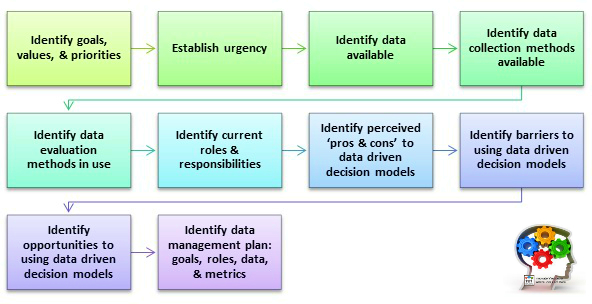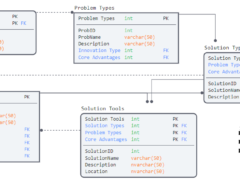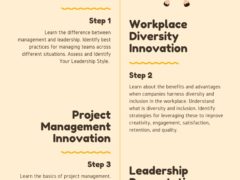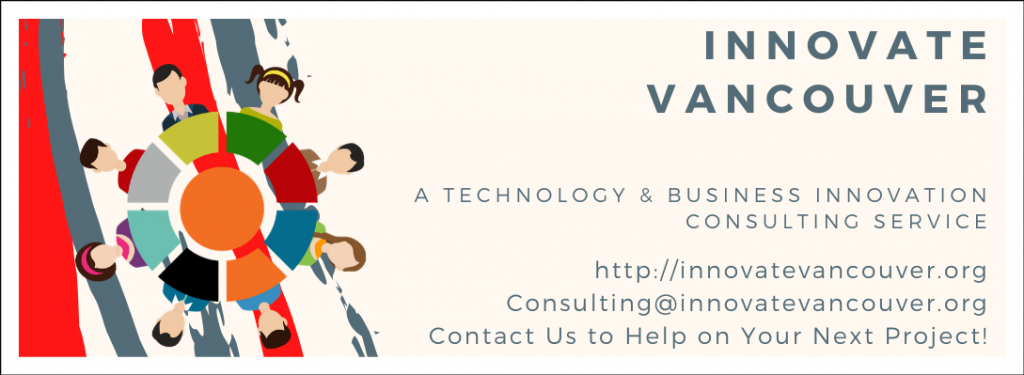Business culture can either be an asset or an obstacle to serving the business’ stakeholders. The business culture of meaning, faith, and values are intertwined with language, symbols, and artifacts. The result is the intersection of belief and experience where the differentiation between facts vs. fiction becomes tangled. Verbal worlds created from this intersection compel individuals to act or resist. They defy verbal worlds held by others that propose contrary actions.
Verbal Worlds
These verbal worlds are reinforced by artifacts, histories, institutional memory, and convenience. Challenging these can be difficult. An entire history of values, language, symbols, and artifacts is available to reinforce existing viewpoints. New initiatives seek to bridge the divide created through the often encountered ‘false dichotomies.’ However, they fail because the execution of these policies continues to fall short.
Rhetoric is adopted that emphasizes ‘key catchphrases’ or ‘value imbued symbols’ in an effort to reinforce existing positions. The resulting dialogue incorporates colors, imagery, emotions, and assumptions. It reinforces existing positions but rarely explores opportunities beneath the surface.
Consider the following scenarios:
- Scenario 1: The business publically funded service hours have fallen behind on delivery.
- Scenario 2: The public funder receives reports that do not reflect this backlog.
- Scenario 3: The public funder wants existing processes to continue as usual. However, customers are seeing a diminishing rate of return on their services as a result.
- Scenario 4: The business service quality is diminishing as employee turnover continues to exceed industry benchmarks.
- Scenario 5: The business customers are happy with their services despite not meeting contract specifications.
- Scenario 6: Leadership prefers to handle ‘situations’ on their own, leaving other stakeholders unaware of events that could impact the rest of the business
What were some of the assumptions you made when reviewing these hypothetical scenarios? What if everyone ‘currently involved’ felt the status quo should be maintained? Would that influence your assumptions or would you want to know more?
Relationships Matter
We live in a world of relationships and values. We often evaluate artifacts based on explanations already known. These include viewpoints and preferences. Meaning and facts are discovered through an experiential approach. This approach attempts to differentiate right from wrong, good from bad, and fact from fiction. History is full of examples of atrocities, misjudgment, and criminal acts. These acts were identified later and were substantiated by the beliefs, values, and assumptions of the era.
Expanding Our Understanding
We need to move beyond deterministic and isolated reasoning. Our understanding can be expanded. Our tools can be enhanced. It seems almost beyond reach to incorporate novel and changing information. Yet when humans are not embroiled in conflict, we yearn for stronger relations. We yearn for this connection when free from the ‘perception’ of threat. We also desire an understanding of how to impact the world for the better. Diversity and other social initiatives are examples of overcoming false dichotomies. These are ways humans have moved beyond beliefs and assumptions. This effort helps us better relate to the world. It is unfortunate this took so long, and that so much more work is still left to be done.

Consider the above comment quoted from a recent startup video. What is your initial response to the statements? Do you agree with them or not? Do you feel they reflect a leader you would be interested in working for or not? How do you think other readers are responding to the comments?
The Consequences of Verbal Worlds
In some work environments, making such statements could get an employee criticized. Attempting to seek improvements beyond the six-scenarios identified earlier might lead to being ostracized or even terminated. And within those environments the meaning, values, beliefs, and artifacts necessary to justify such actions are readily available. And yet in other environments we would observe different responses just as strongly advocated.
What if I told you that Ben’s comments were part of a 54 minute dialogue? This dialogue involved creativity, engagement, vision, alignment, and enrichment. It also included processes to support passion. Most people in this case would then recognize that certain ‘false dichotomies’ were premature. These dichotomies were quick to lump Ben’s statements into the ‘wrong’ category. No single statement, value, or artifact can adequately explain everything that surrounds it.
Context and history continue to matter. But even they have a context and a history. Each providing layers of meaning, value, assumptions, and artifacts that also need to be understood.
Data and the Business World
In order to better understand the context and history that contributes to the six-scenarios described earlier we need Better Tools! Taking an inventory of attitudes, assumptions, and beliefs of the immediate team is no longer enough. It does not suffice unless the goal is to reinforce elements of the current situation. However, it is a significant place to start. It harnesses the desired good-will, motivation, and interests of the team.
The term ‘data’ is often resisted by coworkers due to the culture of meaning, values, and assumptions that surround it. For businesses to better serve their customers and employees, it is crucial that they allocate resources more efficiently. They must become more proficient at collecting, evaluating, and utilizing existing data.
Data is not a-Moral
Despite our natural tendency to view ‘data’ as impersonal, mechanistic, and amoral, it is actually capable of reinforcing relationships. It strengthens customer satisfaction and improves the business’ ability to reach its mission. The relationship is introduced through the process by which useful data is identified, evaluated, and used. Meaning, values, and beliefs are not only reinforced by using data but harnessed as well. This happens because meaning, values, and beliefs determine our evaluation. They dictate what data is needed. They also influence the outcomes we are pursuing.
The VALUE of Data
Data has several issues, particularly when used in isolation. Without appropriate measures, it can be interpreted differently depending on one’s viewpoint. This is likely one of the reasons why ‘data management plans’ are often resisted. This occurs at both the front line and executive levels (including the board).
The discussion of identifying ‘metrics’ or ‘key performance indicators’ to evaluate business performance will often surface resistance. The fear of ‘accountability’ is another word that is often perceived differently than intended. Fear for outcomes not agreed upon highlights how crucial collaboration is. Consensus and agreement around these metrics can be crucial as well.
But data becomes crucial once an agreement is reached regarding business goals. Without it the business, and our coworkers, could be having less impact than desired. Diminishing returns could eventually put the business at risk of being closed. Competitors could surpass us. More productive efforts are realized by our customers elsewhere. (Another word that is often perceived differently than intended.)
Data 101: Quantitative & Qualitative Measures
Data can be both quantitative and qualitative. Neither is necessarily ‘more valuable’ to a business than the other. However, the ability to quantify information makes it easier to measure.
- Qualitative data is often considered more relational whereas quantitative data is more often considered business related. But this is not true. Receiving ‘sixty three thank you cards’ after a special event shows a quantitative measure. It also indicates qualitative measures like satisfaction, happiness, and positive relations.
- Qualitative measures can almost always be tied back to a quantitative measure. Consider the following example. Sixty-three thank-you cards represent the amount of satisfaction. They illustrate the happiness and positive relations resulting from the special event.
- If your business is pursuing qualitative measures these can be tied ‘back to’ quantitative measures that are related. In this instance the special event was the strategy that help the business achieve the qualitative outcomes.
- By identifying the quantitative measure (# of thank-you cards), the business establishes a benchmark. This benchmark can be used to compare future efforts. The number of thank-you cards can be used to evaluate customer satisfaction, happiness, and positive relations for future special events.
- The advantage of having a ‘benchmark’ is that your business can then try out different strategies. These strategies can then be compared to evaluate which one is better suited to help your business reach its goal.
- Without data, or the resulting benchmarks, your business is less likely to respond proactively to deficiencies in performance. You may only react when alerted by customer complaints. This may be a short term option with ‘captured markets’. However, it is not sustainable. Customer needs are often not the same and change over time.
Data Management Planning

There is no panacea or one-size-fits-all approach for getting all business teams interested in using data driven decision models. But the following guidelines can be useful when modified based on the business culture, stage of development, and stage of readiness:
- Identify priorities: Identify customer, stakeholder, employee, and contract priorities for the business.
- Establish urgency: Identify any critical performance or deliverable issues that must be improved.
- Identify data available: Identify what data is already available, collected, and tracked. Identify what business stories can be told with this information.
- Identify data collection methods available: Identify how, where, and why data is already being collected. Formalize this process and if needed identify areas for improved performance to insure the methods remain consistent.
- Identify data evaluation methods in use: Identify how the information is being evaluated and if any benchmarks are being referenced. Insure that these methods remain consistent over time so that benchmarks and comparisons can be established.
- Identify current roles & responsibilities: Identify who is responsible for collecting the data. Determine who is responsible for evaluating and reporting the data. Identify who uses the information and finds it useful. Consider the circumstances under which it is found useful. Identify ways to insure that the information is available when and in what format users need it.
- Identify perceived ‘pros & cons’ to data driven decision models: Identify how data is currently being used. Determine ways in which data driven models will help the business better serve its customers.
- Identify barriers to using data driven decision models: Identify what resources, training, and buy-in is needed. Determine the oversight necessary to reinforce the business steps taken to use data driven decision models.
- Identify opportunities to using data driven decision models: Find business areas where these models would have the most impact. Identify specific questions that benefit from data-driven decisions. This includes areas where these methods serve as a role model. They also reinforce the use of these tools.

Conclusion
The process just described for creating a data driven business culture is designed to decrease resistance. It aims to increase buy-in and improve the business’ opportunities for success. The process begins with creating a business culture that recognizes how data is already being used. Reinforcement, resource development, and training are subsequently implemented as the business identifies areas for improvement. Guesswork is no longer desirable or effective.
There is no one-size-fits-all model for determining which data will be useful. This is determined by the type of business, stakeholder needs, existing opportunities, and present issues facing the business.
Decisions are made every day that take into consideration existing information. This information is evaluated to determine what steps to take, opportunities that exist, or additional questions for follow-up. Recognizing that this process involves using data can be beneficial. It also includes a process for evaluating it. These actions can help reinforce existing processes and methods. The next step is to identify areas where business performance improvements are needed. Additionally, identify the data and information that can assist in these improvements.
Travis Barker, MPA GCPM
Innovate Vancouver
http://twitter.com/innovatevan
Reference:
Herman, E. S., & Chomsky, N. (1988). Manufacturing consent: The political economy of the mass media. New York: Pantheon Books.
Innovate Vancouver is a business development & consulting service and technology startup located in Vancouver, BC. Contact Innovate Vancouver to help with your new project. Innovate Vancouver also gives back to the community through business consulting services. Contact us for more details.




